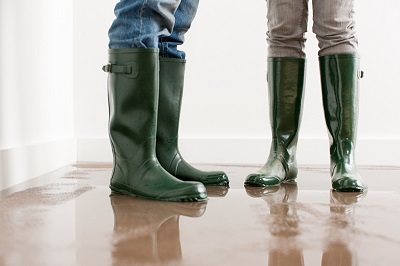
How to Protect Your Home from Floods
As the most common natural disaster across the U.S., floods cause billions of dollars in damage each year and seem to only be growing in frequency. Floods are agitating at best and deadly at worst. Although bad weather is hard to predict and impossible to prevent, there are still steps you can take to protect your home when a flood occurs.
First, it’s crucial to know whether or not your home is in a flood zone. Flood zones are spots around the U.S. that are most susceptible to floods. Check the FEMA website to find out if you live in a flood zone. In certain high-risk areas, homeowners are required to carry flood insurance.
Waterproof the Home
Certain aspects of the home can be replaced or modified to become more water resistant. If you are looking for a home that happens to be in a flood zone, it’s best to look for a home that is on stilts or slightly raised. If this isn’t an option, you may:
-
Raise electrical outlets, switches and other electric systems
-
Install vents or a sump pump for the home’s foundation
-
Apply coats and seals onto the doors and windows
-
Keep valuables above ground level

Landscape with Water in Mind
Outside the home is just as important as the inside. Landscaping the yard around your home in a certain way can prevent or lower the impact of floods affecting your home. It helps to have the lawn slope away from the home. If your lawn dips in, it allows rain and floodwater to pool and become stagnant around the home, causing more damage. Setting the home at a high point will help rain runoff away from the home.
You should also be conscious of everything on your land that could be dangerous. Trim back tree limbs that overhang the house and make sure there is space between the siding of your home and the mulch.
Have Sewage Backup and Safeties
Floods can cause a lot of issues when it comes to the sewer system of your house. You can have an expert install a sewage water backstop, which prevents flood water from becoming overloaded or bursting. This is especially for homes where sewage systems run beneath basements. Also be sure to make sure the sewage pipes have updated valves to seal against water pressure.
Keep Everything Updated
It’s crucial to keep every aspect of the home updated. Have the home frequently inspected to ensure the condition of the home’s walls, foundation, doors, windows and roof. Roofs can be built to resist water, as well. While this won’t necessarily help against floods, it can help against rainwater and storms that often come along with floods. Make sure all systems and pipes are free of rust. If the home has previous water damage, it is more susceptible to more damage due to flooding. Cracks in the wall and stains on the foundation can mean the home has flooded before and should be repaired immediately.
Insure Your Home
It’s never too early to check on your home insurance policy. Make sure the coverage on your home is enough to cover the total replacement cost value of your home in case of storms. Unfortunately, basic home insurance policies don’t cover floods. Even if you’re not in a high-risk flood area, make sure to purchase a flood insurance policy. Flood insurance will provide compensation for damage to the physical dwelling and its attached structures as well as personal belongings in the home.
Most importantly, keep updated with the weather and make sure your family has a plan when weather strikes.
